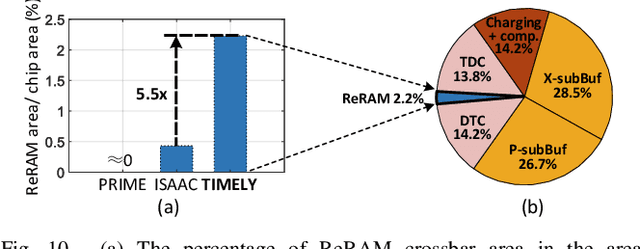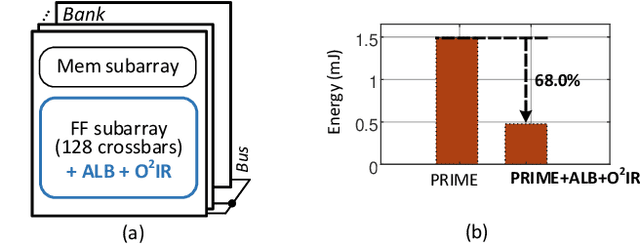Weitao Li
UR$^2$: Unify RAG and Reasoning through Reinforcement Learning
Aug 08, 2025Abstract:Large Language Models (LLMs) have shown remarkable capabilities through two complementary paradigms: Retrieval-Augmented Generation (RAG), which enhances knowledge grounding, and Reinforcement Learning from Verifiable Rewards (RLVR), which optimizes complex reasoning abilities. However, these two capabilities are often developed in isolation, and existing efforts to unify them remain narrow in scope-typically limited to open-domain QA with fixed retrieval settings and task-specific assumptions. This lack of integration constrains generalization and limits the applicability of RAG-RL methods to broader domains. To bridge this gap, we propose UR2 (Unified RAG and Reasoning), a general framework that unifies retrieval and reasoning through reinforcement learning. UR2 introduces two key contributions: a difficulty-aware curriculum training that selectively invokes retrieval only for challenging problems, and a hybrid knowledge access strategy combining domain-specific offline corpora with LLM-generated summaries. These components are designed to enable dynamic coordination between retrieval and reasoning, improving adaptability across a diverse range of tasks. Experiments across open-domain QA, MMLU-Pro, medical, and mathematical reasoning tasks demonstrate that UR2 (built on Qwen2.5-3/7B and LLaMA-3.1-8B) significantly outperforms existing RAG and RL methods, achieving comparable performance to GPT-4o-mini and GPT-4.1-mini on several benchmarks. We have released all code, models, and data at https://github.com/Tsinghua-dhy/UR2.
Fairy$\pm i$: the First 2-bit Complex LLM with All Parameters in $\{\pm1, \pm i\}$
Aug 07, 2025Abstract:Quantization-Aware Training (QAT) integrates quantization into the training loop, enabling LLMs to learn robust low-bit representations, and is widely recognized as one of the most promising research directions. All current QAT research focuses on minimizing quantization error on full-precision models, where the full-precision accuracy acts as an upper bound (accuracy ceiling). No existing method has even attempted to surpass this ceiling. To break this ceiling, we propose a new paradigm: raising the ceiling (full-precision model), and then still quantizing it efficiently into 2 bits. We propose Fairy$\pm i$, the first 2-bit quantization framework for complex-valued LLMs. Specifically, our method leverages the representational advantages of the complex domain to boost full-precision accuracy. We map weights to the fourth roots of unity $\{\pm1, \pm i\}$, forming a perfectly symmetric and information-theoretically optimal 2-bit representation. Importantly, each quantized weight has either a zero real or imaginary part, enabling multiplication-free inference using only additions and element swaps. Experimental results show that Fairy$\pm i$ outperforms the ceiling of existing 2-bit quantization approaches in terms of both PPL and downstream tasks, while maintaining strict storage and compute efficiency. This work opens a new direction for building highly accurate and practical LLMs under extremely low-bit constraints.
Effective and Transparent RAG: Adaptive-Reward Reinforcement Learning for Decision Traceability
May 19, 2025Abstract:Retrieval-Augmented Generation (RAG) has significantly improved the performance of large language models (LLMs) on knowledge-intensive domains. However, although RAG achieved successes across distinct domains, there are still some unsolved challenges: 1) Effectiveness. Existing research mainly focuses on developing more powerful RAG retrievers, but how to enhance the generator's (LLM's) ability to utilize the retrieved information for reasoning and generation? 2) Transparency. Most RAG methods ignore which retrieved content actually contributes to the reasoning process, resulting in a lack of interpretability and visibility. To address this, we propose ARENA (Adaptive-Rewarded Evidence Navigation Agent), a transparent RAG generator framework trained via reinforcement learning (RL) with our proposed rewards. Based on the structured generation and adaptive reward calculation, our RL-based training enables the model to identify key evidence, perform structured reasoning, and generate answers with interpretable decision traces. Applied to Qwen2.5-7B-Instruct and Llama3.1-8B-Instruct, abundant experiments with various RAG baselines demonstrate that our model achieves 10-30% improvements on all multi-hop QA datasets, which is comparable with the SOTA Commercially-developed LLMs (e.g., OpenAI-o1, DeepSeek-R1). Further analyses show that ARENA has strong flexibility to be adopted on new datasets without extra training. Our models and codes are publicly released.
Efficient Dynamic Clustering-Based Document Compression for Retrieval-Augmented-Generation
Apr 04, 2025



Abstract:Retrieval-Augmented Generation (RAG) has emerged as a widely adopted approach for knowledge integration during large language model (LLM) inference in recent years. However, current RAG implementations face challenges in effectively addressing noise, repetition and redundancy in retrieved content, primarily due to their limited ability to exploit fine-grained inter-document relationships. To address these limitations, we propose an \textbf{E}fficient \textbf{D}ynamic \textbf{C}lustering-based document \textbf{C}ompression framework (\textbf{EDC\textsuperscript{2}-RAG}) that effectively utilizes latent inter-document relationships while simultaneously removing irrelevant information and redundant content. We validate our approach, built upon GPT-3.5, on widely used knowledge-QA and hallucination-detected datasets. The results show that this method achieves consistent performance improvements across various scenarios and experimental settings, demonstrating strong robustness and applicability. Our code and datasets can be found at https://github.com/Tsinghua-dhy/EDC-2-RAG.
EXIT: An EXplicit Interest Transfer Framework for Cross-Domain Recommendation
Jul 29, 2024Abstract:Cross-domain recommendation has attracted substantial interest in industrial apps such as Meituan, which serves multiple business domains via knowledge transfer and meets the diverse interests of users. However, existing methods typically follow an implicit modeling paradigm that blends the knowledge from both the source and target domains, and design intricate network structures to share learned embeddings or patterns between domains to improve recommendation accuracy. Since the transfer of interest signals is unsupervised, these implicit paradigms often struggle with the negative transfer resulting from differences in service functions and presentation forms across different domains. In this paper, we propose a simple and effective EXplicit Interest Transfer framework named EXIT to address the stated challenge. Specifically, we propose a novel label combination approach that enables the model to directly learn beneficial source domain interests through supervised learning, while excluding inappropriate interest signals. Moreover, we introduce a scene selector network to model the interest transfer intensity under fine-grained scenes. Offline experiments conducted on the industrial production dataset and online A/B tests validate the superiority and effectiveness of our proposed framework. Without complex network structures or training processes, EXIT can be easily deployed in the industrial recommendation system. EXIT has been successfully deployed in the online homepage recommendation system of Meituan App, serving the main traffic.
Agent Hospital: A Simulacrum of Hospital with Evolvable Medical Agents
May 05, 2024



Abstract:In this paper, we introduce a simulacrum of hospital called Agent Hospital that simulates the entire process of treating illness. All patients, nurses, and doctors are autonomous agents powered by large language models (LLMs). Our central goal is to enable a doctor agent to learn how to treat illness within the simulacrum. To do so, we propose a method called MedAgent-Zero. As the simulacrum can simulate disease onset and progression based on knowledge bases and LLMs, doctor agents can keep accumulating experience from both successful and unsuccessful cases. Simulation experiments show that the treatment performance of doctor agents consistently improves on various tasks. More interestingly, the knowledge the doctor agents have acquired in Agent Hospital is applicable to real-world medicare benchmarks. After treating around ten thousand patients (real-world doctors may take over two years), the evolved doctor agent achieves a state-of-the-art accuracy of 93.06% on a subset of the MedQA dataset that covers major respiratory diseases. This work paves the way for advancing the applications of LLM-powered agent techniques in medical scenarios.
Citation-Enhanced Generation for LLM-based Chatbots
Mar 04, 2024



Abstract:Large language models (LLMs) exhibit powerful general intelligence across diverse scenarios, including their integration into chatbots. However, a vital challenge of LLM-based chatbots is that they may produce hallucinated content in responses, which significantly limits their applicability. Various efforts have been made to alleviate hallucination, such as retrieval augmented generation and reinforcement learning with human feedback, but most of them require additional training and data annotation. In this paper, we propose a novel post-hoc Citation-Enhanced Generation (CEG) approach combined with retrieval argumentation. Unlike previous studies that focus on preventing hallucinations during generation, our method addresses this issue in a post-hoc way. It incorporates a retrieval module to search for supporting documents relevant to the generated content, and employs a natural language inference-based citation generation module. Once the statements in the generated content lack of reference, our model can regenerate responses until all statements are supported by citations. Note that our method is a training-free plug-and-play plugin that is capable of various LLMs. Experiments on various hallucination-related datasets show our framework outperforms state-of-the-art methods in both hallucination detection and response regeneration on three benchmarks. Our codes and dataset will be publicly available.
Incipient Fault Detection in Power Distribution System: A Time-Frequency Embedded Deep Learning Based Approach
Feb 18, 2023Abstract:Incipient fault detection in power distribution systems is crucial to improve the reliability of the grid. However, the non-stationary nature and the inadequacy of the training dataset due to the self-recovery of the incipient fault signal, make the incipient fault detection in power distribution systems a great challenge. In this paper, we focus on incipient fault detection in power distribution systems and address the above challenges. In particular, we propose an ADaptive Time-Frequency Memory(AD-TFM) cell by embedding wavelet transform into the Long Short-Term Memory (LSTM), to extract features in time and frequency domain from the non-stationary incipient fault signals.We make scale parameters and translation parameters of wavelet transform learnable to adapt to the dynamic input signals. Based on the stacked AD-TFM cells, we design a recurrent neural network with ATtention mechanism, named AD-TFM-AT model, to detect incipient fault with multi-resolution and multi-dimension analysis. In addition, we propose two data augmentation methods, namely phase switching and temporal sliding, to effectively enlarge the training datasets. Experimental results on two open datasets show that our proposed AD-TFM-AT model and data augmentation methods achieve state-of-the-art (SOTA) performance of incipient fault detection in power distribution system. We also disclose one used dataset logged at State Grid Corporation of China to facilitate future research.
TIMELY: Pushing Data Movements and Interfaces in PIM Accelerators Towards Local and in Time Domain
May 03, 2020



Abstract:Resistive-random-access-memory (ReRAM) based processing-in-memory (R$^2$PIM) accelerators show promise in bridging the gap between Internet of Thing devices' constrained resources and Convolutional/Deep Neural Networks' (CNNs/DNNs') prohibitive energy cost. Specifically, R$^2$PIM accelerators enhance energy efficiency by eliminating the cost of weight movements and improving the computational density through ReRAM's high density. However, the energy efficiency is still limited by the dominant energy cost of input and partial sum (Psum) movements and the cost of digital-to-analog (D/A) and analog-to-digital (A/D) interfaces. In this work, we identify three energy-saving opportunities in R$^2$PIM accelerators: analog data locality, time-domain interfacing, and input access reduction, and propose an innovative R$^2$PIM accelerator called TIMELY, with three key contributions: (1) TIMELY adopts analog local buffers (ALBs) within ReRAM crossbars to greatly enhance the data locality, minimizing the energy overheads of both input and Psum movements; (2) TIMELY largely reduces the energy of each single D/A (and A/D) conversion and the total number of conversions by using time-domain interfaces (TDIs) and the employed ALBs, respectively; (3) we develop an only-once input read (O$^2$IR) mapping method to further decrease the energy of input accesses and the number of D/A conversions. The evaluation with more than 10 CNN/DNN models and various chip configurations shows that, TIMELY outperforms the baseline R$^2$PIM accelerator, PRIME, by one order of magnitude in energy efficiency while maintaining better computational density (up to 31.2$\times$) and throughput (up to 736.6$\times$). Furthermore, comprehensive studies are performed to evaluate the effectiveness of the proposed ALB, TDI, and O$^2$IR innovations in terms of energy savings and area reduction.
 Add to Chrome
Add to Chrome Add to Firefox
Add to Firefox Add to Edge
Add to Edge